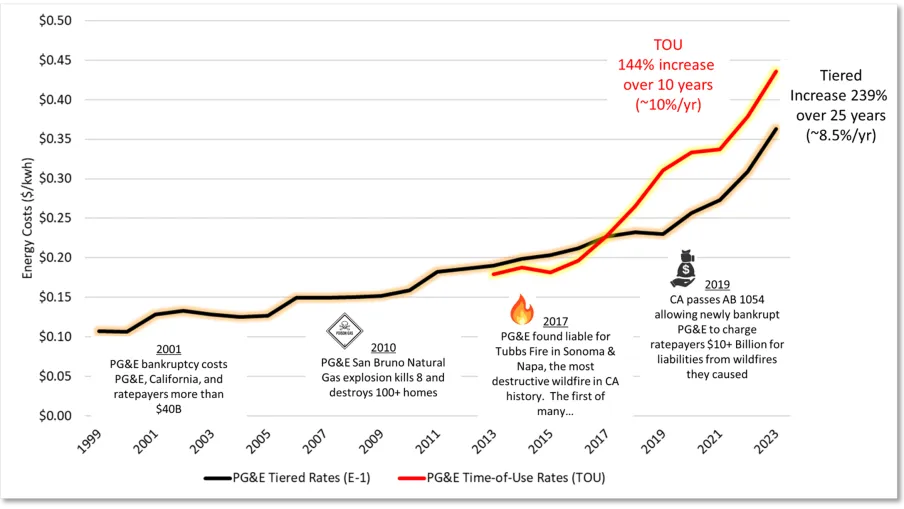Solar delivers strong economic benefits in three ways:
Economics of Solar
Solar delivers strong financial benefits to homes and businesses
What Makes Solar Such a Profitable Investment?
- PG&E customers currently pay 80% more for electricity than the national average.
- Business can utilize 100% Bonus Depreciation in Year 1.
- Cost of Solar Electric system have dropped over 60% in recent years.
- The reliability and efficiency of solar equipment have improved greatly, minimizing maintenance costs.
- Flexible finance solutions provide savings with zero upfront investment.
- The sun is a free, infinite fuel source & the San Francisco North Bay climate is ideal for solar production.
- Solar produces the most energy when it's most in demand; during long, hot summer days.
Electric Rates are Rising – it is Your Choice to Pay Them
Your electricity rates have increased 50% in just 3 years! Even worse, some of the fastest increasing rates are for low-income (CARE rates) and electric vehicle owners.
While promoting clean energy and implementing all-electric mandates in California, Governor Newsome approved AB 1054 which allows PG&E to charge ratepayers for damages and settlements from wildfires they caused. PG&E now has a legal mechanism for charging you more for electricity to cover their legal fees and lawsuit payouts (not to mention political campaign donations and corporate salaries in the tens of millions).
Since 2019, PG&E is estimated to have paid $55 BILLION to settle liabilities related to the wildfires, passing on those costs to the ratepayers. Read more details in our BLOG.
Fortunately, SolarCraft solar energy systems can not only stop the increases in electric costs, but can often provide power at 50-75% less than utility rates. From a purely financial perspective, there has never been a better time to go solar. [note: local CCAs, MCE and SCP, do provide alternative utility-like options for North Bay residents, but their energy rates are designed to very closely mimic PG&E's in structure, cost, and even billing]



